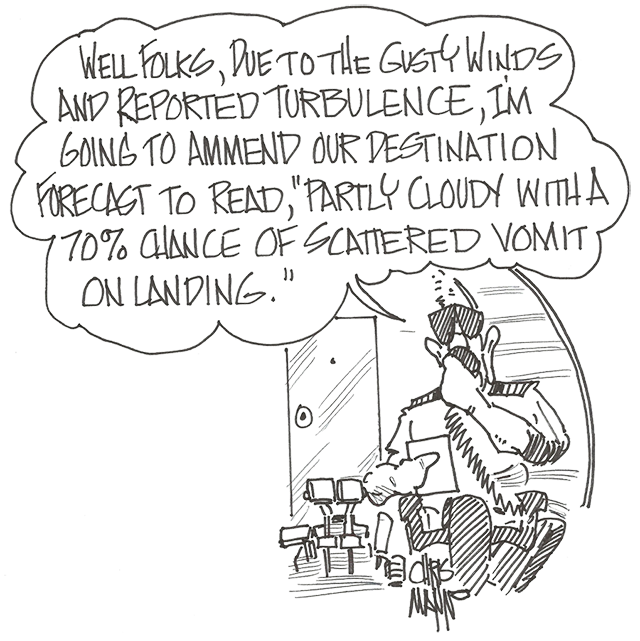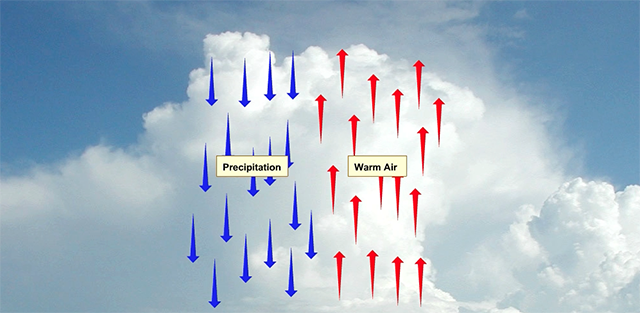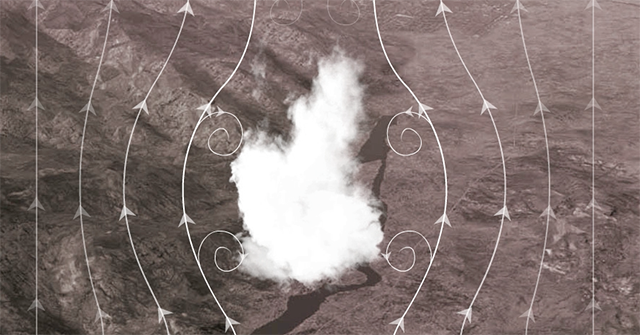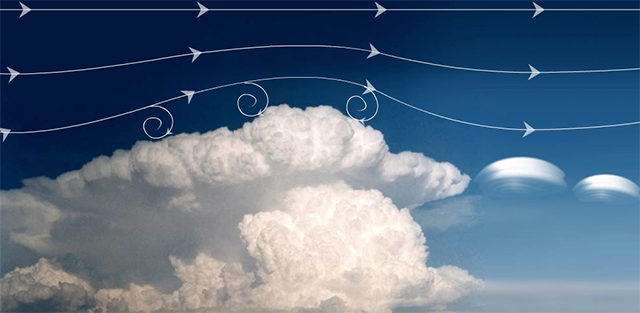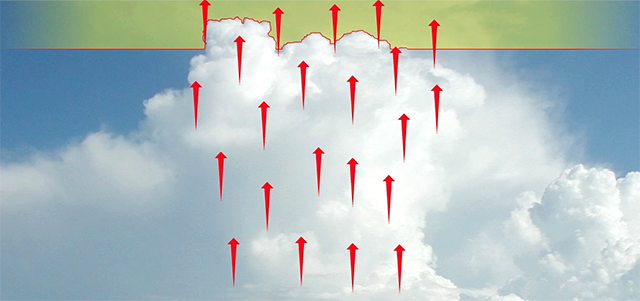As the skies become more crowded and more and more aircraft have ADS-B Out, we seem to have more intel on where the turbulence is and how bad it is. But it still catches us by surprise.
— James Albright

Updated:
2015-11-15
For more than twenty years now, I've flown aircraft weather radar systems which claim to be able to detect turbulence. For the most part, these require moisture in the air to work. So we are still looking for a way to more accurately detect turbulence.

1
High altitude turbulence
Characteristics
Turbulence in and around a convective cell at a high altitude can be encountered from inside, around, and above the cell.
Inside the cell: Turbulence is caused by the updrafts and downdrafts which can exceed 13,000 fpm. The zone of up to down can be smaller than the wing span of an aircraft.
In the clear air around the cell: Turbulence is caused by whirlpool like phenomenon in the clear air outside of the cell. The faster the wind, the greater the distance from the cell where turbulence will be felt.
Over and around the top of the cell: Turbulence is caused by mountain wave effect of rolling motion above the top.
Over the top of the cell: Turbulence is caused by rising air passing beyond the top of the cell.
Avoidance procedure
- Circumnavigating and going over the top require a safe distance maintained from convective clouds.
- Circumnavigating is more viable than going over the top of a convective cloud.
- The degree of turbulence around a convective cell is a function of the wind speed.
- We can use nav equipment to avoid turbulence by determining the wind speed.
- We need to double the avoidance distance of single cell encounters for lines or clusters of cells.
- The minimum clearance distance over the top of any thunderstorm is 5,000 feet.
- The working formula for avoidance distance over the top of a thunderstorm is as follows:
- Round off the wind speed to the nearest 10 knots.
- Multiply the resulting figure by 100.
2
Low altitude turbulence
Characteristics
- Occurs inside the storm.
- Occurs outside the storm in the clear air.
Avoidance procedure
- At low altitudes with wind speeds 15 knots or less a safe distance of 5 nm-10 nm is enough to avoid severe turbulence.
- For wind speeds greater than 30 knots, go by the standard for high-altitude turbulence.
